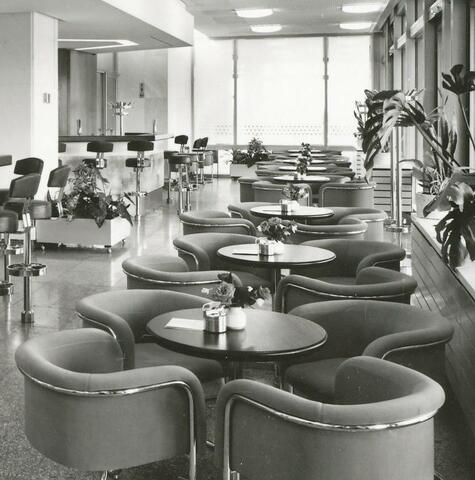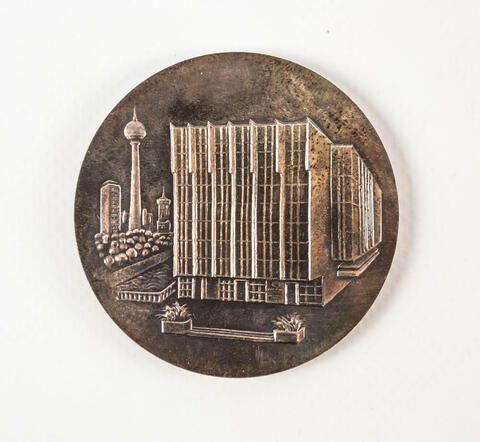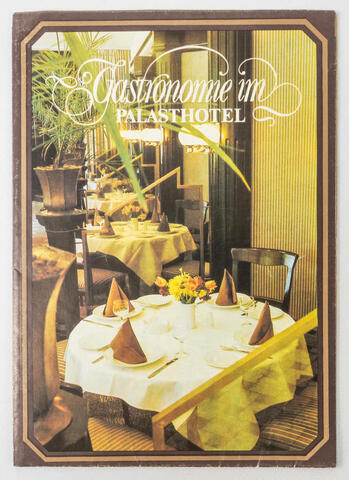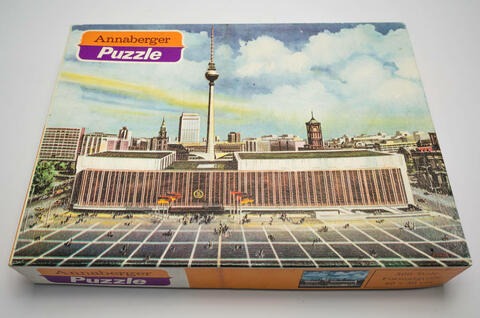GDR History
The Palace of the Republic: Between Splendour and Controversy
The history begins with a demolition and ended with a demolition. The Palace of the Republic (Palast der Republik) was built on a site that had already been marked by the demolition(s) of the City Palace since 1950. It was not until 1976 that this void in the city was filled. This palace had been badly damaged during the Second World War, but was still in need of restoration. As the GDR gained more and more international recognition, thoughts also grew about a representative building that would support this growing legitimacy. Almost a quarter of a century later, the Palace of the Republic was built at a cost of almost 500 million East Marks, making it the most expensive building project in the history of the GDR.
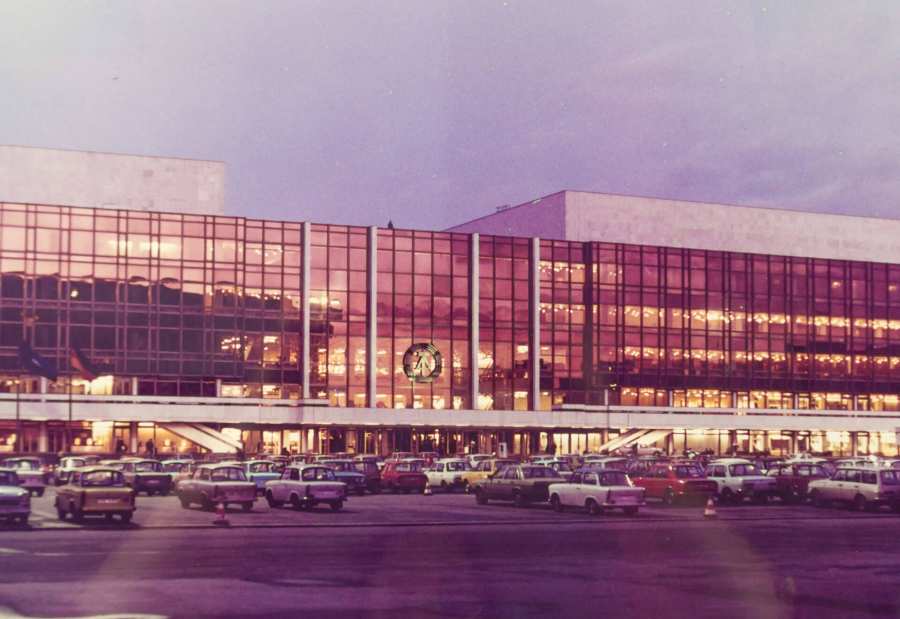
Fig.: Colour photo of the Palace of the Republic at dusk
The construction of the Palace of the Republic
The foundation stone was laid on 2 November 1973, followed by a topping-out ceremony on 18 November 1974. Finally, the Palace opened its doors to the public on 25 April 1976. In just under three years of construction, a representative building had been created that was to unite the people and the state under one roof. The building was intended to reflect the GDR's self-image as a modern republic that wanted to appear internationally competitive and self-confident through its technological successes.
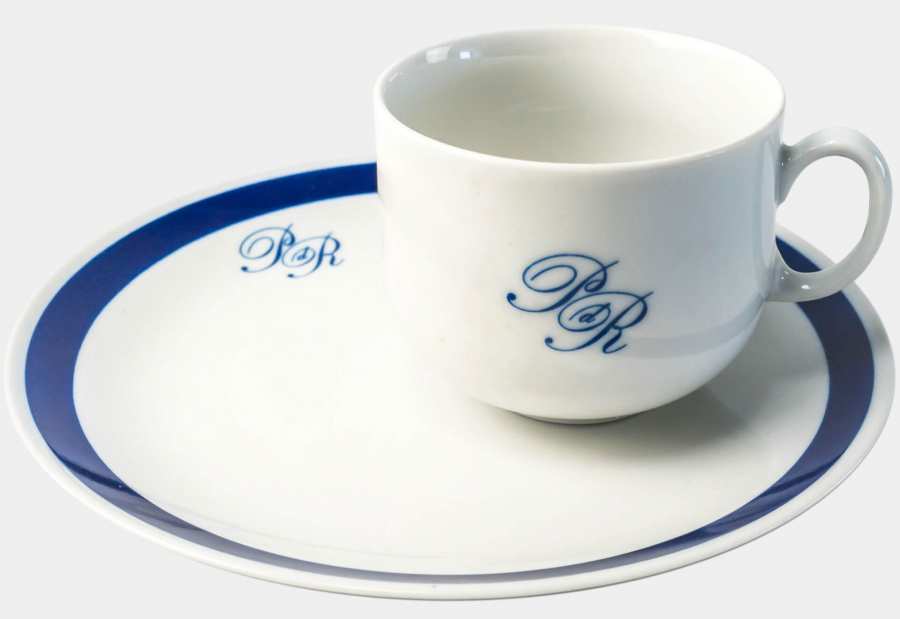
Fig.: Coffee service from the Palace of Republic consisting of a cup, a saucer and a plate
The new diversion in East Berlin
The population found a place of sophisticated leisure, culture and gastronomy on the generous 15,300 square metres. With its diverse events and restaurants, it provided the perfect backdrop for joyous celebrations. The »People's Palace« housed 13 restaurants, a bowling alley, a concert hall, a theatre, two discotheques, a gallery and much more. The palace's versatility as a place of entertainment, celebration and gastronomic delights played a major role in making it one of the most popular places to go for the people of the GDR and is still remembered as such today.
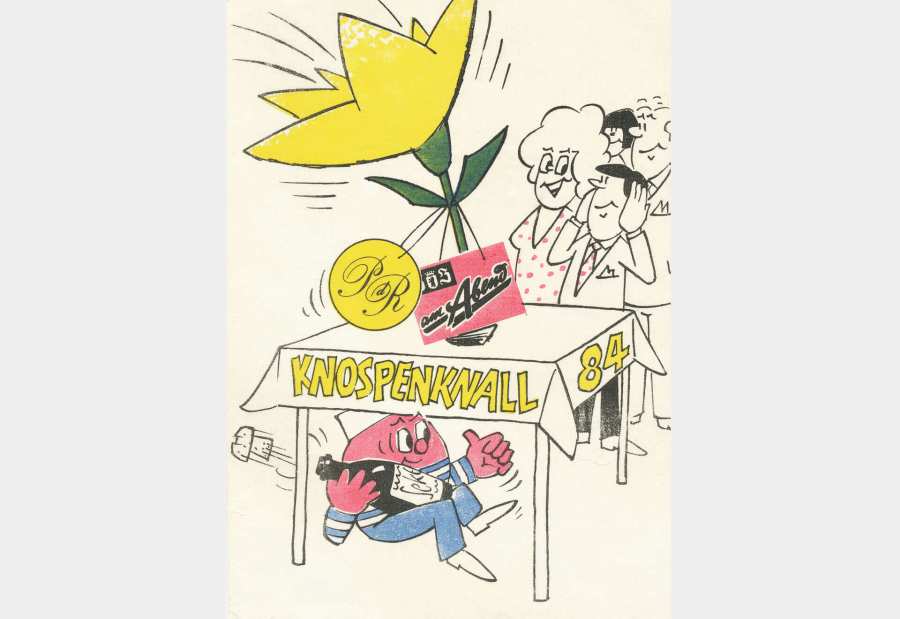
Fig.: Event brochure for the spring ball »Knospenknall« in the Palace of the Republic from 1984.
The People's Chamber in the Palace of the Republic
In addition to the numerous cultural events, the Palace of the Republic was also the seat of the People's Chamber (ger. Volkskammer), the parliament of the GDR. The small hall provided a representative setting for the sessions of the People's Chamber, which were held there up to four times a year. The use of the building as a meeting place for the People's Chamber was intended to emphasise its multifaceted significance. Not only cultural events took place there, but also political dialogues were offered space - with the people and for the people. However, it should not be forgotten that there were also two operational listening rooms of the Stasi to monitor political events and People's Chamber meetings. It was in this place, of all places, in the great hall of the palace, that the first freely elected People's Chamber of the GDR took the historic decision on 23 August on the GDR's accession to the Federal Republic of Germany on 3 October 1990.
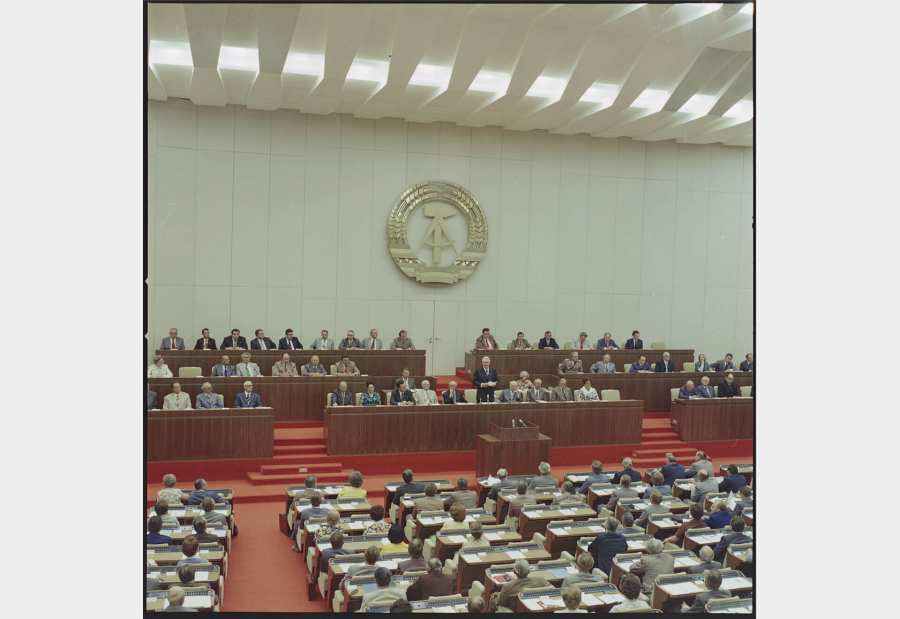
Fig.: Meeting of the People's Chamber in the Palace of the Republic – © Bundesarchiv: Bild183-R0624-415
Asbestos in the Palace of the Republic means the end
On 19 September 1990, less than a month after the historic vote, the palace was closed by order of the district hygiene inspectorate and by decision of the GDR Council of Ministers - on the grounds that it was contaminated with asbestos. In November 1998, the restoration of the palace began, although critics saw this as the first step towards its eventual demolition. Through the efforts of cultural workers, the gutted building was temporarily used as a venue for concerts, theatre performances and exhibitions in the noughties. However, the new life that had been breathed into the building was stifled when it was finally demolished in 2006.
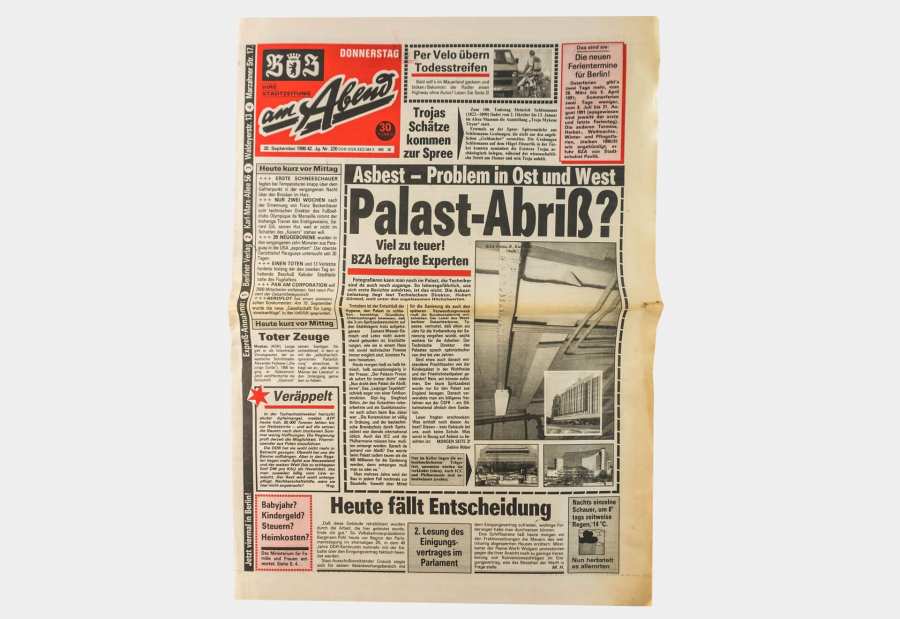
Fig.: BZ am Abend newspaper. Issue of Thursday, 20 September 1990. vol. no. 220.
The Berlin City Palace (ger.Stadtschloss) prevails
In the midst of the unprecedented public debate that had been going on for years among citizens and experts from the fields of architecture and politics, a clear direction had now emerged: the path to the reconstruction of the Berlin City Palace and thus against the preservation of the Palace of the Republic. However, this discussion was not only about urban planning in Berlin, but also about how to deal with recent history as well as about claims and political positioning. The perception of a condemnation of the GDR by West Germans who had not experienced and lived through that time themselves triggered a defensive attitude in some people. This was particularly evident in the context of the debates among those who cherished nostalgic memories of happy hours in the Palace of the Republic.
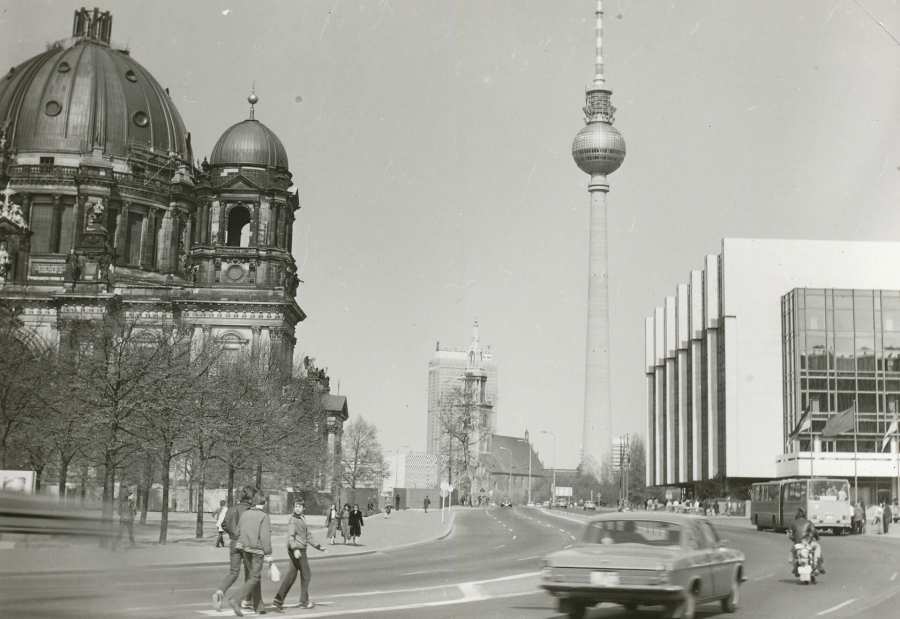
Fig.: Photo in b/w of the Berlin Cathedral, the TV Tower and the Palace of the Republic.
The Humboldt Forum in the Berlin City Palace
In 2020, the Humboldt Forum was opened in the newly built City Palace amidst much protest and discussion. It houses the Ethnological Museum, the Museum of Asian Art, the Berlin Exhibition of the Stadtmuseum Berlin and the Humboldt Forum of the Humboldt-Universität zu Berlin. The Association for the Promotion of the Palace of the Republic still advocate demolishing the newly built City Palace and rebuilding the Palace of the Republic in its 2005 state. This proposal aims to reconstruct the palace not as a prestige object of the GDR, but as a cultural space of the noughties. The realisation of this idea remains questionable. We will follow the developments with interest.
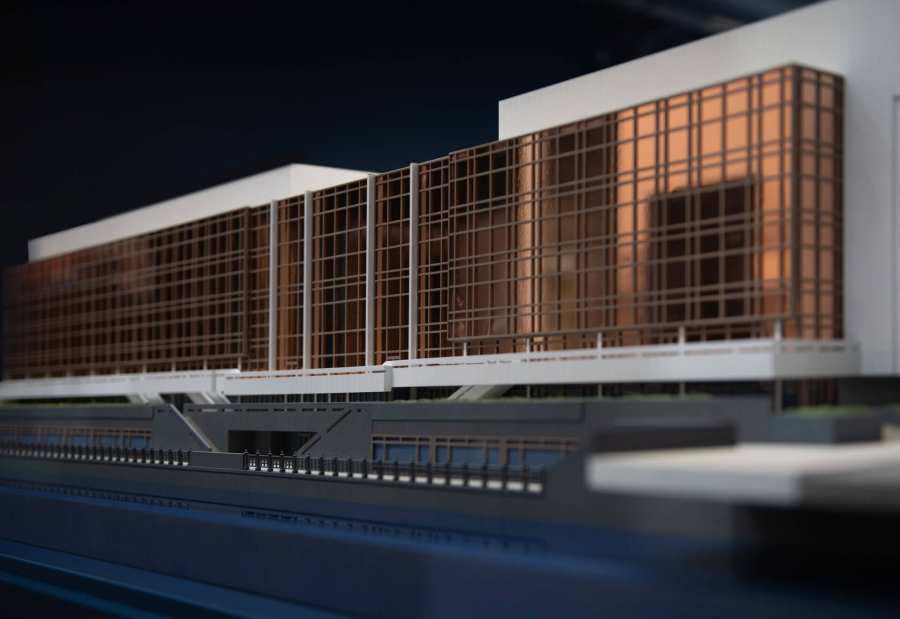
Fig.: Model of the Palast der Republik in the DDR Museum.
Model »Palace of the Republic« in the DDR Museum
The Palace of the Republic is still very much present in (East) German memory - and since 6 October it has been on display in the exhibition of the DDR Museum as a 1:125 scale model with a remarkable size of 200 cm x 130 cm. This model is considered the largest and most detailed of its kind and rests on a base made from original materials from the palace. In addition, various exhibits are displayed in the exhibition showcases to illustrate the changes in the palace over the course of time. Another highlight are the original parts of the guidance system and the lighting on the ceiling of the museum, which are reminiscent of the former Palace of the Republic - popularly known as »Erichs Lampenladen« (eng. Erich's Lamp Shop).

